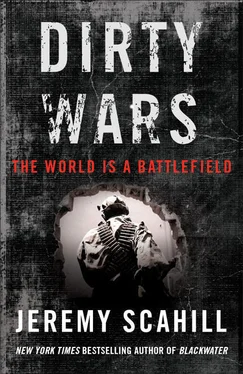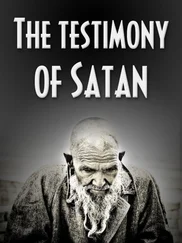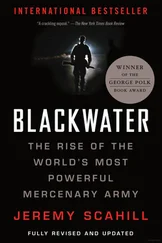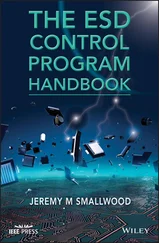Clarke conceded that the Clinton-era authorizations for targeted killings “looks like a very Talmudic and somewhat bizarre series of documents,” adding that they were crafted in a careful way to narrow the scope of such operations. “The administration, and particularly the Justice Department, did not want to throw out the ban on assassination in a way that threw the baby out with the bathwater. They wanted the expansion of authorities to be limited.” He added that the Clinton-era authorizations for targeted killing look like “a very narrow casting. But that, I think, is because of this desire not to throw out altogether the ban on assassinations and create an American hit list.”
Representative Nancy Pelosi, one of the most powerful Democrats in Congress at the time, admonished her colleagues in the closed chamber not to publicly discuss any of the highly classified memoranda that authorized the use of lethal force. The memoranda, she said, “were held to the most restricted form of notification at the highest level in the Congress. It is extraordinary…that this information is being shared here today.” She warned against any leaks to the media and added: “There is no way that we can confirm, deny, stipulate to, acknowledge knowledge of the memoranda.” Clarke was asked whether he thought the United States should lift its policy banning assassinations. “I think you have to be very careful about how broadly you authorize the use of lethal force,” he responded. “I don’t think the Israeli experience of having a broad hit list has been terribly successful. It doesn’t—certainly hasn’t stopped terrorism or stopped the organizations where they have assassinated people.” Clarke said that when he and his colleagues in the Clinton administration issued authorizations for targeted killing operations, they were intended for very surgical and rare cases. “We didn’t want to create a broad precedent that would allow intelligence officials in the future to have hit lists and routinely engage in something that approximated assassination….There was concern in both the Justice Department and in some elements of the White House and some elements of the CIA that we not create an American hit list that would become an ongoing institution that we could just keep adding names to and have hit teams go out and assassinate people.”
Even so, Clarke was part of a small group of officials in the counterterrorism community under the Clinton administration who agitated for the CIA to be more aggressive in using that lethal authority and pushed the envelope of the assassination ban within the limits he outlined. “In the wake of 9/11,” Clarke declared, “almost everything we proposed prior to 9/11 is being done.”
It would soon be everything and more.
RUMSFELD AND CHENEY HAD PADDED the administration with leading neoconservatives who had spent the Clinton era effectively operating a shadow government—working in right-wing think tanks and for major defense and intelligence contractors, plotting their return to power. Among them were Paul Wolfowitz, Douglas Feith, David Addington, Stephen Cambone, Lewis “Scooter” Libby, John Bolton and Elliott Abrams. Many of them had cut their teeth in the Reagan and Bush White Houses. Some, like Cheney and Rumsfeld, went back to the Nixon era. Several were key players in building up a policy vision under the umbrella of the ultranationalist Project for the New American Century (PNAC). Despite Clinton’s decisions to use force in Yugoslavia and Iraq and to conduct a series of air strikes in other nations, they viewed the Clinton administration as an almost pacifist force that had weakened the hand of US dominance and left the country vulnerable. They believed the 1990s had been a “decade of defense neglect.” The neoconservatives had long advocated a posture that, in the wake of the Cold War, the United States was the lone superpower and should exert its weight aggressively around the globe, redrawing maps and expanding empire. At the center of their vision was a radical increase in US military spending, plans for which were drawn up by Cheney and his aides when he was defense secretary in 1992. The Cheney draft Defense Planning Guidance, the neocons asserted in PNAC’s founding document, “provided a blueprint for maintaining U.S. preeminence, precluding the rise of a great power rival, and shaping the international security order in line with American principles and interests.” Wolfowitz and Libby were the key authors of Cheney’s defense manifesto, which argued that the United States must be the sole superpower and take all necessary actions to deter “potential competitors from even aspiring to a larger regional or global role.”
Their plan, however, was scrapped by more powerful forces within the first Bush administration, namely, the chair of the Joint Chiefs of Staff, General Colin Powell, Secretary of State James Baker and National Security Adviser Brent Scowcroft. The final draft, much to Cheney’s and the neocons’ frustration, was greatly toned down in its imperialist language.
A decade later, even before 9/11, the neoconservatives—restored to power by the Bush administration—pulled those plans out of the dustbin of history and set about implementing them. Expanding US force projection would be central, as would building up streamlined, elite special ops units. “Our forces in the next century must be agile, lethal, readily deployable, and require a minimum of logistical support,” George W. Bush had declared in a speech on the campaign trail in 1999 that was crafted by Wolfowitz and other neocons. “We must be able to project our power over long distances, in days or weeks, rather than months. On land, our heavy forces must be lighter. Our light forces must be more lethal. All must be easier to deploy.”
The neocons also envisioned further asserting US dominance over natural resources globally and directly confronting nation-states that stood in the way. Regime change in multiple countries would be actively contemplated, particularly in oil-rich Iraq. “Ardent supporters of U.S. military intervention, few neo-cons have served in the armed forces; fewer still have ever been elected to public office,” noted Jim Lobe, a journalist who tracked the rise of the neoconservative movement for a decade leading up to 9/11. They have a “ceaseless quest for global military dominance and contempt for the United Nations and multilateralism more generally.” Lobe added: “In the neo-conservatives’ view, the United States is a force for good in the world; it has a moral responsibility to exert that force; its military power should be dominant; it should be engaged globally but never be constrained by multilateral commitments from taking unilateral action in pursuit of its interests and values; and it should have a strategic alliance with Israel. Saddam must go, they argue, because he is a threat to Israel, and also Saudi Arabia, and because he has hoarded—and used—weapons of mass destruction.” The PNAC crowd had concluded that the “United States has for decades sought to play a more permanent role in Gulf regional security. While the unresolved conflict with Iraq provides the immediate justification, the need for a substantial American force presence in the Gulf transcends the issue of the regime of Saddam Hussein.” Within weeks of taking office, Rumsfeld and Cheney pressed to reverse President Clinton’s signing, at the very end of his time in office, of the Rome Statute, which recognized the legitimacy of an international criminal court. They would not stand for US forces being subjected to potential prosecution for their actions around the world. Soon after becoming defense secretary, Rumsfeld wrote that he wanted his legal staff—and those of other US government agencies—to immediately determine “how we get out of it and undo the Clinton signature.”
Читать дальше












